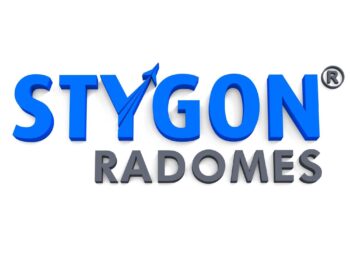Introduction
In a world increasingly reliant on wireless communication and advanced radar systems, radomes play an essential role in safeguarding and enhancing the performance of these technologies. Whether in aviation, defense, telecommunications, or other industries, radomes serve as protective shields that optimize functionality while enduring challenging environments. This article delves into what radomes are, how they work, their applications, benefits, and considerations for choosing the right radome.
Understanding Radomes and Their Functionality

What is a Radome?
A radome, short for “radar dome,” is a structural enclosure that protects radar, antenna systems, or other electronic equipment from environmental influences like wind, rain, snow, or debris. Designed to be radio frequency (RF) transparent, radomes allow electromagnetic signals to pass through with minimal interference, ensuring the enclosed equipment performs optimally. They come in various shapes, including spherical, geodesic, or planar designs, depending on the application.
How Radomes Work
Radomes function by providing a physical barrier that protects sensitive electronic systems from harsh environmental conditions while maintaining the integrity of the transmitted and received signals. The radome’s material is engineered to minimize signal attenuation, allowing radar or communication systems to operate with high precision. In addition, radomes reduce drag and improve aerodynamics in applications such as aircraft and missiles.
Materials Used in Radomes
Radomes are constructed using materials that balance strength, durability, and RF transparency. Common materials include:
- Fiberglass: Lightweight and highly durable, making it ideal for aerospace and marine applications.
- Kevlar: Known for its strength and flexibility, often used in high-performance applications.
- PTFE (Polytetrafluoroethylene): Offers excellent weather resistance and minimal RF signal interference.
- Composites: Custom-engineered materials tailored for specific requirements, such as high thermal resistance or extreme durability.
Applications of Radomes

Aviation and Defense
Radomes are critical in aviation and defense, where they protect radar systems in aircraft, missiles, and military vehicles. They enable seamless operation of navigation, tracking, and targeting systems in extreme environments, ensuring mission success.
Telecommunication Systems
In telecommunications, radomes safeguard antenna systems for satellite communication, mobile networks, and broadband internet. They protect equipment from environmental damage while ensuring uninterrupted signal transmission and reception.
Emerging Applications
With advancements in technology, radomes are finding new applications in fields like autonomous vehicles, space exploration, and weather monitoring systems. These innovative uses highlight the growing importance of radomes in modern infrastructure.
Benefits and Challenges of Using Radomes

Key Benefits of Radomes
- Environmental Protection: Radomes shield sensitive equipment from harsh weather and debris.
- Improved Signal Performance: By reducing interference, radomes ensure reliable signal transmission.
- Durability: Constructed with robust materials, radomes endure extreme conditions, enhancing system longevity.
- Aerodynamics: In aviation and marine applications, radomes streamline designs, reducing drag.
Challenges and Solutions
While radomes offer numerous advantages, they come with challenges, such as:
- Signal Attenuation: Subpar materials or designs can impact signal quality. Solution: Use high-quality RF-transparent materials.
- Maintenance: Harsh environments can lead to wear and tear. Solution: Regular inspections and maintenance schedules ensure longevity.
- Cost: Advanced materials and manufacturing processes can be expensive. Solution: Optimize designs to balance cost and performance.
How to Choose the Right Radome

Factors to Consider
When selecting a radome, consider the following factors:
- Application Requirements: Understand the specific use case, such as aviation, telecommunications, or defense.
- Environmental Conditions: Consider the operational environment—extreme temperatures, UV exposure, or high winds.
- Material Selection: Choose materials that provide the best balance of durability, RF transparency, and cost.
- Customization Needs: Some applications may require bespoke radome designs to meet unique requirements.
Stygon Radomes’ Offerings
Stygon Radomes provides a wide range of radomes tailored to meet diverse industry needs. Their expertise in innovative materials and custom designs ensures optimal performance and durability for various applications. Explore their offerings to find the perfect solution for your requirements.
FAQs
Q1: Are radomes only used in aviation?
No, radomes are used across various industries, including telecommunications, defense, marine, and emerging technologies like autonomous vehicles and space exploration.
Q2: Can radomes withstand extreme weather conditions?
Yes, radomes are designed with durable materials to withstand harsh environments, including high winds, snow, and UV exposure.
Q3: How do I maintain a radome?
Regular inspections, cleaning, and timely repairs are essential to ensure a radome’s longevity and performance.
Conclusion
Radomes are indispensable components in modern technology, safeguarding sensitive equipment and optimizing their performance across various industries. By understanding their functionality, applications, and benefits, you can make informed decisions when selecting the right radome for your needs. Whether you’re in aviation, telecommunications, or exploring emerging applications, radomes are a key element in ensuring success in challenging environments. For tailored solutions, consider trusted providers like Stygon Radomes.
